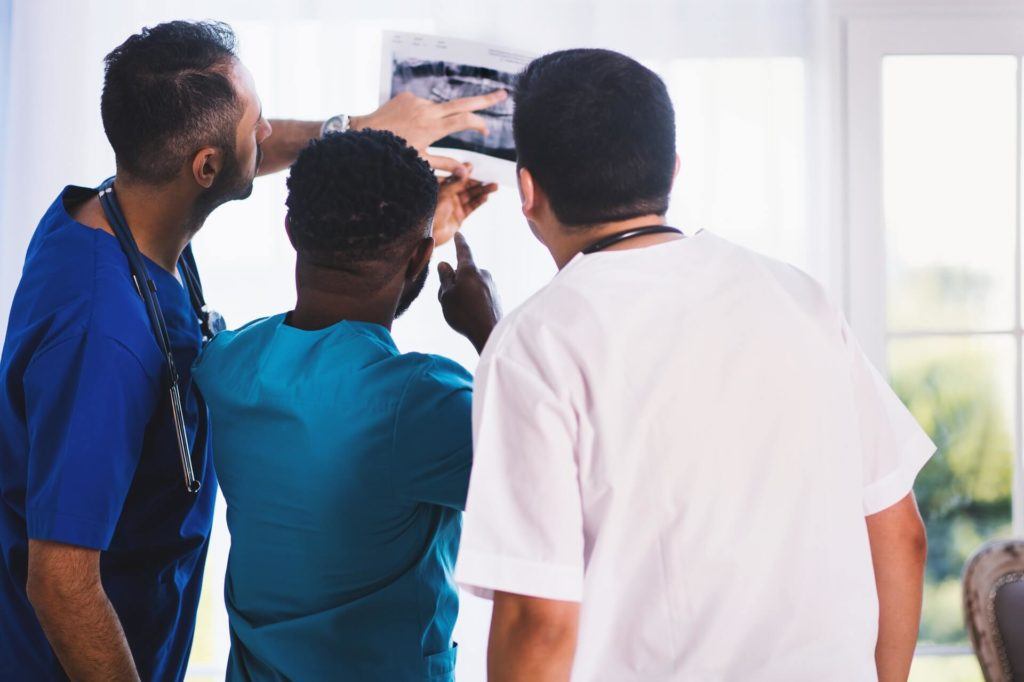Business
How Ruby is shaping the future of biomedicine
The healthcare industry is investing in software development to create electronic health records and software as a medical device.

U.S. healthcare expenditures reached more than $3.5 trillion in 2018 and are expected to grow to more than $5.6 trillion by 2025. This incredible growth also caused the healthcare industry to become the largest source of jobs in the country in 2018, finally surpassing the retail industry.
The industry has responded to this growth by renewing its investments in software development. Major hospital chains and research organizations have utilized Ruby development outsourcing firms to create custom electronic health records (EHRs) and software as a medical device (SaMD) in order to treat disease and improve patient outcomes.
In addition, healthcare providers are investing heavily in data privacy in order to combat hackers and protect their patient’s sensitive information. Read on to learn how the biomedicine field, and larger healthcare industry, are using Ruby development to create much-needed, high-quality software for medical practitioners.
Ruby development for biomedicine
Clinicians are one of the main drivers behind the demand for Ruby development in the biomedicine industry. Physicians, nurses, and other specialists are demanding easy-to-use and well-designed software that allows them to focus on what’s most important—their patients.
Healthcare companies are utilizing in-house teams and Ruby development companies to build effective medical devices and EHR systems. In addition, cybersecurity experts are helping them secure their systems against malicious attacks.
Software as a medical device
SaMD is a term that encompasses all software that is used for medical purposes without being part of medical device hardware.
This includes mobile applications, software that runs on computers, and software that is used in combination with a medical device. Common SaMDs are MRI viewing software, cancer screening image processing software, and BMI calculators. It excludes software that runs on medical devices, such as a pacemaker, MRI, or insulin pump software.
The biomedicine field is investing billions of dollars in the development of SaMD products.
That’s because physicians and other medical practitioners have begun to ask for the type of intuitive, easy-to-use interfaces found in traditional consumer software. In addition, tech companies are creating software that helps physicians diagnose diseases earlier and prescribe more effective treatment plans.
The Food and Drug Administration (FDA) recently released a set of guidelines on SaMD development that will dramatically impact the development of this type of software. These new guidelines streamlined the development process and allow companies to apply for a pre-certification, which accelerates the approval process and has lead to increased investment.
Electronic health records
EHRs are the backbone of the modern biomedicine industry. They help physicians keep track of patient records and healthcare providers to exchange test results and other important information with ease. This also removes the burden from patients, since they no longer have to carry medical records from doctor to doctor by hand.

Ruby development can help doctors in administering better treatments for patients. (Source)
However, electronic health records programs are often difficult to learn and lack standardization. Doctors frequently complain that patient records do not transfer cleanly from one system to the other. This means that healthcare providers must manually input reams of information into a new program when new patients are on-boarded.
This system is made even more complicated by the Health Insurance Portability and Accountability Act, which governs the way that healthcare data must be stored. Biomedicine providers are required to store sensitive data online and ensure that information is secure from cyber attacks.
The biomedicine field has turned to Ruby developers to create effective EHRs. Companies like CareCloud have recently released well-built EHRs built with Ruby that are easy-to-use, transfer well, and come with robust cybersecurity protections. In addition, platforms like CareCloud effectively built user experience and interface design considerations into the software—making the entire process smooth and intuitive.
Data privacy
Software security continues to be a major concern for healthcare organizations of all sizes. That’s because the number of consumer data breaches reached an all-time high in 2018—and is only expected to keep rising.
The healthcare industry is a major target for these attacks because of the presence of legacy software systems that lack cybersecurity protections and the massive amount of sensitive data that is collected from patients on a daily basis. This includes names, birth dates, social security numbers, addresses, and medical diagnoses.
Hospital providers like Sutter Health in Northern California are leading the healthcare data privacy charge. The organization used Ruby developers to create a robust cybersecurity infrastructure, designed to keep their patient’s records safe and to thwart cybercriminals.
Ruby is an excellent choice for data privacy-focused software because the language comes with a range of security features. These include protections against cross-site scripting and request forgery, SQL injection, and several trusted security Gems.
Conclusion
The biomedicine field is a leader in software development. The healthcare industry is currently recruiting Ruby developers in large numbers in order to develop custom software that can save healthcare providers time—and help them save lives.
Major healthcare companies like WRS and CareCloud are building advanced EHRs that make transferring patient records a simple process. On the other hand, medical device manufacturers are creating improved software for medical hardware, such as x-ray equipment and MRI machines.
Finally, hospitals are turning to Ruby development outsourcing to shore up their data privacy defenses and to protect their patients’ sensitive medical records from hackers. Security consultants help these facilities identify potential vulnerabilities and proactively create defenses before a breach occurs.

-

 Business2 weeks ago
Business2 weeks agoFed Holds Interest Rates Steady Amid Solid Economic Indicators
-

 Crypto12 hours ago
Crypto12 hours agoBitcoin Surges Toward $110K Amid Trade News and Solana ETF Boost
-

 Fintech1 week ago
Fintech1 week agoMuzinich and Nao Partner to Open Private Credit Fund to Retail Investors
-

 Crypto3 days ago
Crypto3 days agoBitcoin Traders on DEXs Brace for Downturn Despite Price Rally
























